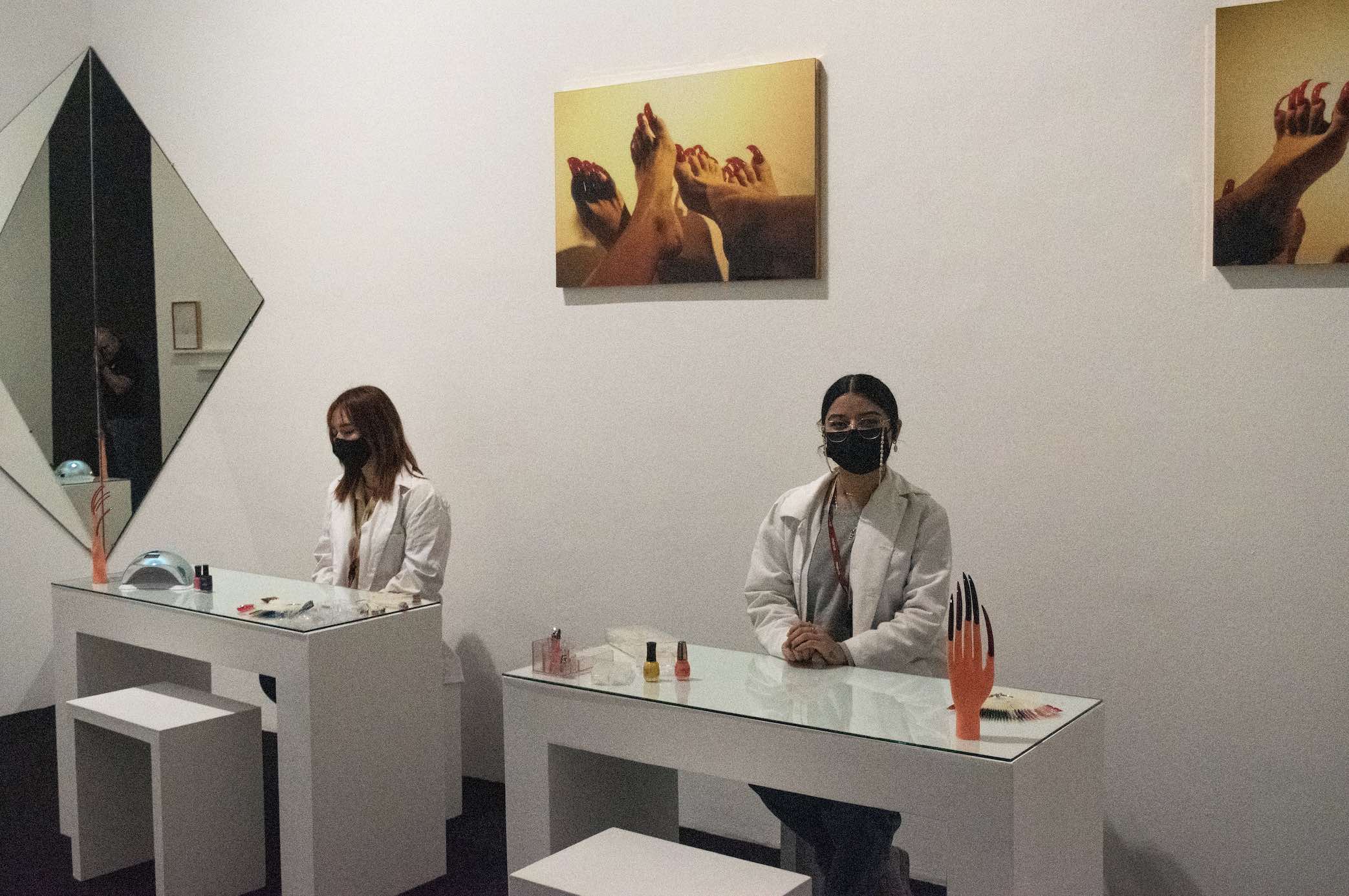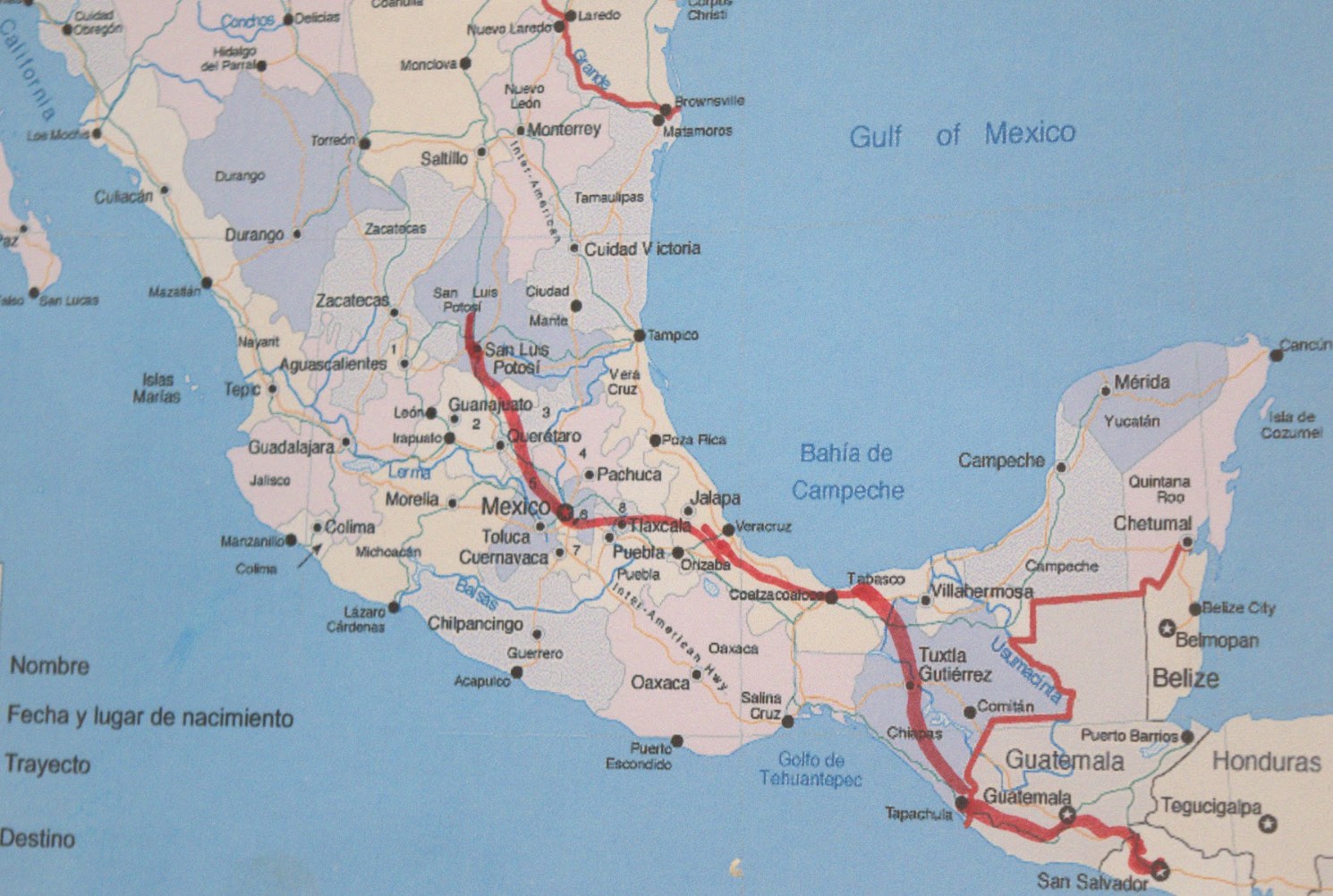
Review
We Would Like to Answer Some Questions: colectivo marcelaygina 1997-2010
by Rocío Cárdenas Pacheco
At Museo MARCO
Reading time
6 min
The exhibition brings together documentation and records of actions carried out by colectivo marcelaygina, comprised of the artists Marcela Quiroga and Georgina Arizpe. This is one of the most important art collectives on the contemporary scene, with offerings that are advanced and daring, full of humor, sarcasm, and social criticism. Curated by Michele Fiedler, the show runs from October 21, 2022 to February 5, 2023 at the MARCO in Monterrey. The work To Order Call Us or Dial 1-800-thepinkpunks (2001/2022) was exhibited at the Plaza Hidalgo until Friday, October 7. It is at theMARCO throughout the exhibition.
Writing about what has taken place in the city of Monterrey involves an exercise of recalling over three decades of events. At the end of the last decade the city saw the consolidation of the Nuevo León Council for Culture and Arts (CONARTE)as well as the new collection of the Museo MARCO, together with the fact that the city had several new sites from which unconventional artistic practices were being promoted, such as Galería BF15, Galería Efímera, La lloradera, and El voladero, among other independent spaces.
In the words of critic Eduardo Ramírez: “The relation between independent spaces and public space is crucial. The fracture of public space: the 1985 Mexico City earthquake, the 1992 explosion in the Reforma section of Guadalajara... ”*1 On the other hand, the arrival of foreigners like Pierre Raine and Jean Christophe (in charge of Galería BF15) brought new ideas to the contemporary art scene, as well as different exchanges and possibilities for young local artists, and from three collectives in particular: Tercerunquinto, marcelaygina, and Los Lichis.

In this exhibition one can see an extensive overview of the work (performance, ready-made, and intervention) of one of the most active groups of the last years of the nineties (1997-2010), a period in which these two artists questioned the canons imposed on women in Monterrey society, in addition to the social inequalities and dynamics present on Mexico’s northeastern border, in territories adjacent to the neighboring U.S. state of Texas. The collaboration between Quiroga and Arizpe began in 1997 when they were still students at the Autonomous University of Nuevo León’s Faculty of Visual Arts (FAV), part of a very active artistic scene where various groups were characterized by their interest in public spaces.
Their work’s central axis consists of critique and a sense of humor, initially appearing in performances recorded in photography and video, thus exhibiting for us questions about feminine roles for middle-class women. Their characters lie at the border of what is legal and illegal (sex workers, drug dealers, traffickers of illegal goods), acting in order to survive in a society clearly marked by patriarchal patterns. Almost all their work was carried out in the field, mediated by different audiovisual languages such as the television image, the consumption of popular TV programs, and the video image. Their trajectory as creators was international, traveling through different countries while presenting their actions. In 2010 Mexico City’s Museo de Arte Carrillo Gil presented Check Point, an overview of their career that was curated by Taiyana Pimentel.
The exhibition Nos gustaría contestar algunas preguntas: colectivo marcelaygina 1997-2010 (We Would Like to Answer Some Questions: colectivo marcelaygina 1997-2010) presents a chronological tour, divided into four thematic axes, reflecting the transformations of their concerns and ideals over the years.
I. The mediation of their own image (1997-2001)
Live broadcasting, documenting the image via video installations, and monitoring site-specific performances were central to pieces such as The Evil Daughters Return (2000). Dressed in latex suits, crooked teeth and showing a rude girl attitude, they would play with fiction and reality, circling a car around the zócalo until it crashed, arriving handcuffed and escorted by the police: all of this as part of the IX Performance Festival, organized by the Museo Ex Teresa Arte Actual.
II. The performativity of feminine aesthetics (2001-2004)
Beauty and the way in which femininity demands extensive sacrifices from women, including pain and discomfort, form part of the themes and references in this category of the exhibition, including the work providing its title: We Would Like to Answer a Few Questions (2003-2004), in which, as an artistic intervention, they placed four-centimeter-long false nails on the feet of a contestant on the local TV program “Aficionados del 12,” thus carrying out a critique of the machista and classist dynamics of live television.

III. Exit of the body and entrance of the object (2004-2005)
At this time the work of the collective changes in order to give much greater importance to others. It’s for this reason that objects—especially household devices—gain prominence, among them pressure cookers and washing machines, thus forming a critique of the roles they play among women in “mandatory” domestic activities. In the work We Prefer to Tell the Truth…About This, they launder money (Mexican bills, to be precise), taking out of circulation 60,000 pesos stamped with the letters “myg.” This work offers a clear reference to the Brazilian artist Cildo Meireles, who, in his interrogations of society, seeks answers to questions related to different factors, from art communication processes and the roles of spectators to the value of art and its historical legacies.
IV. Border dynamics (2005-2010): migratory crossings to the north
Monterrey is a city located very close to the Texas border, and consequently close to its changes and various migratory movements. Living near the border, the collective’s members have been interested in various aspects that occur at the crossroads between Mexico and the U.S., among them migration to the north. Other concepts that they have explored about the border revolve around trade, smuggling, the concept of a dividing wall, and armed violence. All of this was addressed in the project Wish Me Luck, Cross Your Heart, 24K (2006), which includes a series of actions and dynamics, such as the transportation of 750 grams of gold hidden in a vest between Mexico and the U.S., as well as maps with lines drawn by migrants in order to show their routes.

The exhibition by marcelaygina presents us with a series of important moments in the search for feminine identity from the perspective of two young artists interested in questioning the status quo of art in Monterrey, from the end of the nineties to the beginning of the twenty-first century. Laughter and a sense of humor accompany this exhibition. The museography is dynamic and part of a central axis: the integration of actions, based in an efficient and simple perspective that allows one to observe photographs, video installations, and sculpture pieces, among other forms of audiovisual communication.
The regional historiography of the Mexican northeast is arid, as is its climate, and for that reason it is important to highlight the valuable efforts of curator Michele Fiedler and of the MARCO’s director, Taiyana Pimentel, as well as of the artists themselves, who have worked hard to reconstruct their archive, to engage in a dialogue with it, and to confront it in order to leave a mark on the city’s recent memory.
*1: https://revistacodigo.com/espacios-independientes-monterrey/
Published on January 5 2023